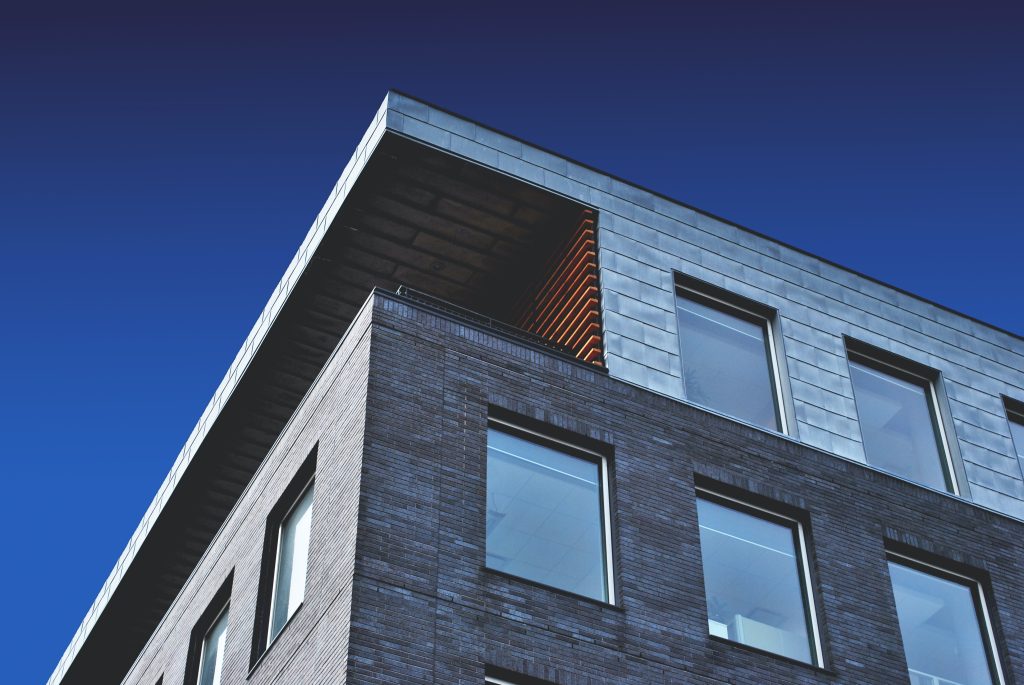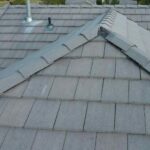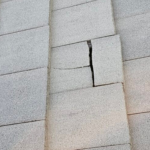
TPO roofing has gained popularity in the roofing industry due to its combination of durability, energy efficiency, and cost-effectiveness, making it a viable option for many commercial and industrial building owners.
It offers a dependable and durable roofing solution which can meet the demands of various applications while providing aesthetic appeal and environmental benefits. In this article, I will explain why TPO roofing is a great choice for flat or low-slope roofs in Littleton, Colorado.
Introduction to TPO Roofing
TPO (thermoplastic olefin) roofing is a single-ply roofing membrane that has gained popularity in recent years due to its durability, energy efficiency, and affordability. TPO roofing is made from a blend of polypropylene and ethylene-propylene rubber, which makes it resistant to UV rays, tears, punctures, and impact damage. The membrane comes in rolls that are welded together to form a seamless roofing system.
Roofers in Littleton, CO You Can Trust

Flat and low-slope roofs utilize waterproofing membranes to provide a protective barrier against water infiltration. These membranes, such as TPO are installed over the roof deck and serve as a waterproof layer. Proper installation and maintenance of the membrane are crucial to ensure its effectiveness in preventing water penetration.
What is TPO Roofing?
TPO roof membranes are made up of two primary components: polypropylene and ethylene-propylene rubber. Polypropylene is a flexible and durable material that provides excellent resistance to moisture, while ethylene-propylene rubber is a synthetic elastomer that offers superior resistance to weather, heat, and oxidation.
When combined, these two materials create a strong, lightweight, and highly reflective roofing membrane that is perfect for low-slope and flat roof systems. It’s highly reflective properties can help reduce the energy consumption of your home by reflecting the sun’s rays away from your roof. TPO membranes are also resistant to algae, mold, and mildew, which can help prolong the life of your roof.



TPO roofs come in a variety of colors including white, gray, and tan. The bright white color is the most popular choice, as it offers the highest level of reflectivity, which helps keep your home cooler during the hot summer months.
The membrane can be installed in a variety of ways including mechanically attached, fully adhered, and ballasted. The installation method will depend on the slope of your roof and the building code requirements in your area.
Why Invest in a TPO Roofing System?
Littleton, Colorado experiences a semi-arid climate with hot summers and cold winters. The city also receives a significant amount of sunshine throughout the year. Investing in a TPO roof system offers several benefits that make it an attractive choice for many property owners. Here are some reasons why you might consider investing in a TPO roof:
- Energy Efficiency: They have high reflectivity, meaning they can reflect a significant amount of sunlight and reduce heat absorption into the building. This can help lower cooling costs during hot weather, improve energy efficiency, and potentially contribute to LEED (Leadership in Energy and Environmental Design) certifications.
- Durability: They are known for its durability and resistance to UV radiation, ozone, and chemical exposure. It can withstand harsh weather conditions, including extreme temperatures and fluctuations, without significant degradation. This durability translates into a longer lifespan for the roofing system.
- Cost-Effectiveness: They are considered cost-effective compared to some other roofing options. The installation costs are often lower due to its lightweight nature, ease of installation, and availability in large rolls. Additionally, the energy savings achieved through its reflective properties can provide long-term cost benefits.
- Versatility: They are available in various thicknesses, widths, and colors, providing flexibility and customization options to suit different building types and design preferences. It can be installed on flat roofs or roofs with low slopes, making it suitable for a wide range of applications.
- Environmental Benefits: They are considered an environmentally friendly roofing option as it is made from recycled materials, allowing for eco-friendly disposal and potential material reuse. Its high reflectivity helps reduce the heat island effect in urban areas, minimizing the impact on local microclimates.
- Low Maintenance: They require relatively low maintenance compared to some other roofing materials. Routine inspections and simple cleaning are usually sufficient to keep the roof in good condition. Regular maintenance can help identify and address any issues before they escalate.
Comparing TPO Roofing to Other Materials
When considering a new membrane roofing material for property in Littleton, CO, it is essential to compare TPO roofing to other options available in the market. Some of the key comparisons include:
TPO vs. EPDM
EPDM (ethylene propylene diene monomer) is another popular single-ply roofing material. While both TPO and EPDM offer excellent durability and weather resistance, TPO is considered more energy-efficient due to its high reflectivity. Additionally, TPO membranes are typically easier to install and repair, as the heat-welded seams create a stronger, more watertight seal.
TPO vs. PVC
PVC (polyvinyl chloride) is another single-ply roofing material that shares similarities with TPO. Both materials offer excellent durability, weather resistance, and energy efficiency. However, PVC is typically more expensive than TPO, making TPO a more cost-effective choice for many homeowners.
TPO vs. Asphalt Shingles
Asphalt shingles are the most common roofing material used in residential applications. While asphalt shingles are relatively affordable and easy to install, they do not offer the same level of energy efficiency, durability, or weather resistance as TPO membranes.
Choosing the right Roofing Contractor for TPO Installation
Choosing the right roofing contractor is crucial to the success of your roofing project. Here are some tips to help you choose the right contractor:
- Look for experience: Choose a contractor who has experience installing TPO roofing. Ask for references and check online reviews to ensure that the contractor has a good reputation in the industry.
- Ask for a warranty: Work with a contractor who offers a warranty on their workmanship. A warranty can give you peace of mind knowing that your roof is protected in case of any issues.
- Get a written estimate: Your chosen contractor should provide a detailed written estimate of the project. The estimate should include the cost of materials, labor, and any additional services.
TPO Maintenance and Care
While TPO roofing is known for its low-maintenance properties, it is still essential to take care of your roof to ensure its longevity and performance. Here are some maintenance tips for your TPO roof:
- Keep the roof clean
Clean your TPO roofing regularly to remove any debris, dirt, or leaves that may have accumulated on the surface. This can help prolong the life of your roof and prevent any damage.
- Inspect the roof regularly
Inspect your roofing regularly to check for any signs of damage such as punctures, tears, or cracks. If you notice any damage, contact a professional roofing contractor to repair the damage.
- Trim overhanging trees
Trim any overhanging trees near your roof to prevent any damage from falling branches or leaves. This can help prevent any damage to your TPO roofing and prolong its life.
Frequently asked questions about TPO roofing
Here are some frequently asked questions about TPO roofing:
Q: How long does TPO roofing last?
A: TPO roofing can last up to 30 years with proper maintenance and care.
Q: Is TPO roofing environmentally friendly?
A: Yes, TPO roofing is environmentally friendly as it is made from recycled materials and can be recycled at the end of its life cycle.
Q: How much does TPO roofing cost?
A: The cost of TPO roofing depends on the size of your roof, the installation method, and the roofing contractor you choose. On average, TPO roofing can cost between $5 to $8 per square foot.
TPO Cost and Return on Investment
A TPO roof system is one of the most affordable roofing materials available in the market. The cost of TPO installation depends on the size of your roof, the installation method, and the roofing contractor you choose. On average, TPO roofing can cost between $5 to $8 per square foot.
The return on investment for TPO roofing can be significant as it can help lower your energy bills and improve the value of your home. TPO roofing can also help reduce the need for frequent repairs and maintenance, which can save you money in the long run.
To get precise cost estimates, evaluate the possible ROI, and make an informed decision based on your unique demands and budget, it is advised to speak with roofing specialists or contractors who have experience with TPO roofing.
Conclusion
In conclusion, TPO roofing is a popular choice for commercial roofing or homes with low-slope roofs due to its cost-effectiveness, energy efficiency, and durability.
TPO membranes’ resistance to UV radiation and harsh weather conditions enhances their longevity and minimizes maintenance needs. Overall, TPO roofing provides a reliable and cost-effective solution for commercial properties, making it a popular choice in the roofing industry.
Our team of professionals can provide expert guidance, quality installation, and ongoing maintenance for your TPO roofing needs. Contact Bjorn’s Roofing today to schedule a consultation and take the first step toward a reliable and efficient roofing system for your property.
Latest Posts
Related: tpo roofing systems, pros and cons of tpo roofing, what is tpo roofing made of, is tpo roofing material, guide to tpo roofing, what is tpo, tpo roofing cost, roofing membrane, waterproofing roof, tpo roofing membranes, tpo vs pvc roofing, tpo vs epdm, systems what is tpo roofing, TPO roofing material, tpo roofing problems



